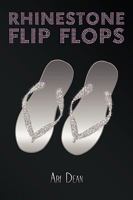Hooray for Today, Flip-Flop Lovers!
By Beth Clark • June 15, 2018
The (Short) Story of Flip-Flops
Flip-flops are so much more than mere footwear...they're a way of life, even essential to life for avid wearers. Over 3 billion pairs (yes, really) are produced and sold annually worldwide. They're the No. 1 shoe in India, China, Africa, and arguably, the world. Unfortunately, they're also one of the biggest ocean pollutants, especially off the East African coast, but algae-based and other biodegradable materials are being developed and used increasingly.
The genesis of flip-flops, also known as thongs (Australia), slippers (Hawaii), zoris (Japan), jandals (New Zealand), infraditos (Italy), plakkies (South Africa), and clam diggers (Texas), goes back 6,000 years, and they're depicted in ancient Egyptian murals in 4,000 BC. They made their US debut when soldiers returning from WWII brought them back from Japan, but credit for coining the onomatopoeia term "flip-flop" goes to 1950s America. They surged in popularity after the Korean War, and by the 1960s, they were mainstream unisex footwear.
The true beauty of flip-flops is their universal nature...from infants to centenarians and beggars to millionaires, anyone and everyone can (and does) wear them, and from sporty to fancy, casual to formal, the beach to the mountains, hiking the Pacific Northwest to walking the red carpet, flip-flops go with everything and do it all.
Flip-Flop Facts
- The first flip-flops were made from papyrus, palm leaves, rawhide, wood, straw, and even the yucca plant.
- Artist David Palmer designed the world's most expensive flip-flops, made by the eco-conscious footwear company Chipkos. For $18,000, you too can have flip-flops with a solid 18-carat gold logo (and save 1,000 square meters of Costa Rican rainforest).
- In 2012, Keith Lavaseur ran the 26.2 mile Baltimore marathon in flip-flops, with a time of 2:46:58.
- Noisy footwear is banned on the Italian island of Capri, and a couple of people have been arrested for wearing flip-flops.
The Flip-Flop Lifestyle
- How to Live in Flip-Flops by Sandy Gingras
- Millionaire in Flip-Flops by Sue Cooper
- Flip-Flops and Shades on Thassos by Alan R. Massen
Flip-Flop Fiction
- Rhinestone Flip-Flops by Ari Dean
- Shaking in Her Flip-Flops by Joyce Oroz
- A Mile in My Flip-Flops by Melody Carlson
Flip-Flops for the Kids
- Flip-Flops by Nancy Cote
- Shells, Smells, and the Horrible Flip-Flops of Doom by Rachel Vail
- The Rabbit Ate My Flip-Flops by Rachel Elizabeth Cole






















